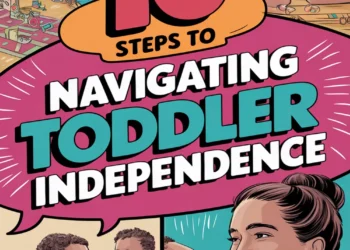To shift your toddler’s naps smoothly, start by recognizing their readiness signs and set a consistent nap schedule. Gradually adjust nap times by shifting them 15-30 minutes every few days. Create a calming pre-nap routine with soothing activities to help them wind down. As they adapt, ease into one nap days; consider quiet time during mornings. Stay flexible and observant, and be patient as they adjust. Discover more strategies to support this journey ahead!
Recognize Signs of Readiness
As you watch your toddler grow, it’s natural to wonder when they’re ready to shift out of naps. You might notice cues that suggest your little one is approaching this change. For example, are they fighting nap time more often or having trouble settling down? If your toddler seems to be bursting with energy later in the day, that could indicate they’re getting enough rest overnight. Watch for changes in their nighttime sleep patterns, too; if they’re consistently sleeping longer, they might be ready to drop that midday nap. Trust your instincts, and remember that each child is unique. Recognizing these signs can help you support your toddler through this important developmental phase.
Set a Consistent Nap Schedule
Once you’ve recognized your toddler’s signs of readiness, it’s time to establish a consistent nap schedule that works for both of you. Aim for the same nap times each day to create predictability, which helps your toddler feel secure and understand when to expect rest. Consider their natural rhythms—some kids thrive with shorter morning naps, while others may need longer stretches. You’ll want to keep their environment calm and soothing during this time; dim lights and soft music can work wonders. Consistency is key, so try to stick to the routine even on weekends. Remember, each child is unique, and it’s perfectly okay to tweak the schedule as needed. With patience, you can create a restful routine that suits your toddler’s needs.
Recommended Items
Check out these helpful recommendations for a smoother nap time transition—perfect for you and your little one!
Gradually Adjust Nap Times
Adjusting your toddler’s nap schedule can be a delicate task, but making gradual changes can ease the process for both of you. Start by shifting their nap time by 15 to 30 minutes every few days. This slow adjustment helps their body clock adapt without causing too much disruption. Keep an eye on their energy levels; if they seem overly tired or hyper, you might need to adjust your approach. Consistency is key—try to maintain their new schedule as much as possible. Communicate with your toddler using simple language, so they understand the changes. Remember, every child is different, so be patient and flexible. With these small steps, you’re laying the groundwork for a smoother adjustment.
Step-by-Step Guide to Toddler Nap Transitions
Create a Calming Pre-Nap Routine
Creating a calming pre-nap routine can make all the difference when helping your toddler settle down for some rest. Start by choosing a quiet space and dimming the lights to signal it’s time to unwind. Engage in calming activities that you both enjoy, like reading a book or singing a soothing song. Stick to a consistent order of activities so your toddler knows what to expect, which can ease anxiety and promote relaxation. Don’t rush; take your time to savor these moments together. Remember, your calm energy will help set the tone. By creating a familiar routine, you’re not just encouraging better sleep but also strengthening your bond with your little one.
Ease Into One Nap Days
As your toddler grows, you may notice signs they’re ready to shift to one nap a day, and easing into this adjustment can make the process smoother for both of you. Start by gradually adjusting their nap schedule. If they’re currently taking two naps, try reducing the morning nap by 15-30 minutes. Instead of dropping it altogether, encourage a quiet time with books or soft music. Watch for cues that indicate tiredness around the new afternoon nap time, and stay consistent with that timing. It might take a few weeks for your toddler to fully adapt, so be patient and responsive to their needs. This gentle change can help them feel secure and rested as they move toward a single daily nap.
Stay Flexible and Observant
While each toddler’s change to a single nap varies, staying flexible and observant can make a significant difference in how smoothly this adjustment unfolds. Pay close attention to your toddler’s behavior and mood. If they seem unusually cranky or overly energetic, they might need a nap sooner or later than usual. It’s essential to adjust your schedule as needed, keeping in mind that some days may not go according to plan. You may find that a consistent routine is helpful, but don’t hesitate to adapt as your child grows. Remember, it’s about finding what works best for both of you during this change. Your awareness and willingness to adjust will support your toddler’s needs and help ease the process.
Be Patient and Supportive
Steering your toddler’s shift to a single nap can be challenging, so it’s important to approach this phase with patience and support. Your little one is adjusting, and showing understanding during this time can help immensely. Remember, every toddler is unique and may need varying lengths of time to adapt.
| Positive Approach | What to Avoid | Supportive Strategies |
|---|---|---|
| Celebrate small wins | Comparing to others | Maintain a consistent routine |
| Offer comfort | Pushing too hard | Provide a cozy sleep space |
| Encourage open dialogue | Ignoring cues | Stay calm and reassuring |













